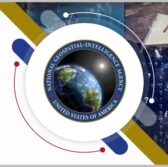NASA’s Goddard Space Flight Center has started soliciting information on potential offerors that could provide commercial capabilities to reboost the orbit of satellites and other space technologies.
The space agency considers using the Hubble Space Telescope for a demonstration over the next few years and expects potential partners to provide the launch vehicle, spacecraft and other resources to support the demonstration, according to a request for information published Thursday.
“Should NASA decide to pursue this demonstration, GSFC would provide technical information and technical consultation with GSFC HST experts to facilitate rendezvous, docking, and reboost,” the notice reads.
The agency wants interested stakeholders to describe their proposed concept of operations such as technical approach for carrying out a demonstration, number of burns, length of docked period; capabilities to support the concept; and evaluation of risks to the Hubble.
Potential vendors should also state in their responses the technical objectives of their envisioned demonstration, technical readiness level of key components, timeline for completion in 18 to 24 months and nonmonetary contributions or resources they expect from NASA.
Responses to the RFI are due Jan. 24.





